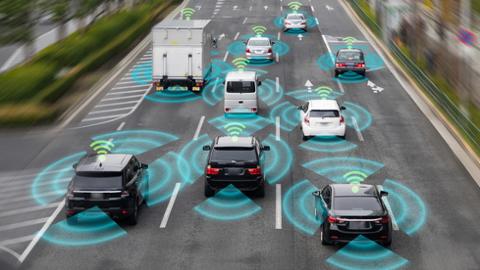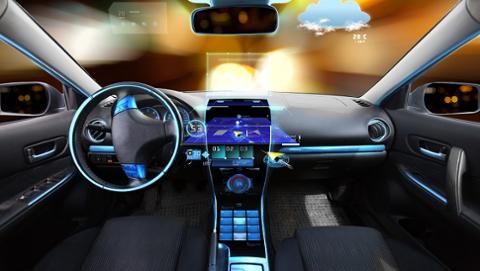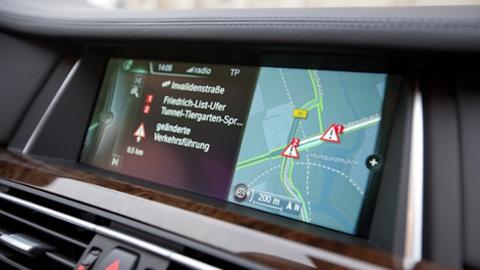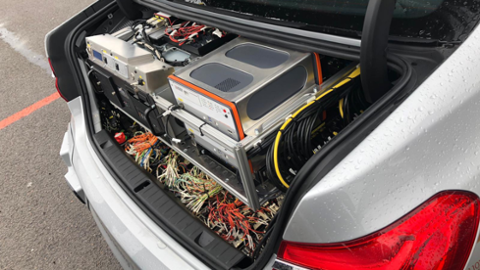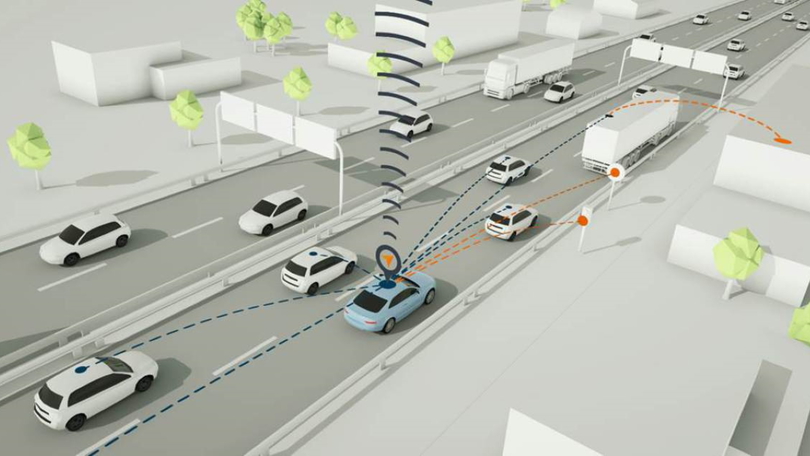
Source: BMDV
Automated, autonomous and connected vehicles as well as connected transport infrastructure have long since been much more than science fiction. The technological developments have reached an advanced stage. In the future, self-driving vehicles will ensure that people remain mobile into old age and despite physical limitations. Accident rates will decrease, as more than 90 percent of accidents today are due to human error.
Germany has established itself as a pioneer and international catalyst for automated and connected driving. We have to maintain and build on this position.
Digital test beds in the public road environment are an essential part of the Federal Government’s research and innovation funding and focus on different social groups. Industry and the research community can gain experience of real world driving and driving situations of different complexities. Policymakers gain new insights that form the basis of transport policy decisions. The aim of the test beds is to make the potential inherent in the new technologies tangible for the citizens.
To ensure a higher degree of transparency concerning test field activities in Germany, the Federal Highway Institute (BASt) has been monitoring test field activities. Test field monitoring includes collecting information on the test fields in the road sector and related research projects and making it available to the public. The monitoring activities will also form a basis for better coordination of test field activities. In September 2021, BASt published a report on test field monitoring. In August 2021, BASt had also already launched a website containing information on the existing digital test fields in Germany and the research and innovation projects carried out on these test fields.
The Ministry uses the findings from test field monitoring to support the initiative of the Conference of Ministers of Transport (VMK) to improve coordination of test field activities between the Federal and federal state levels.
An overview of the test beds:
Digital Motorway Test Bed
To promote innovation, the Ministry established the Digital Motorway Test Bed in Bavaria in 2015 – as a technology-neutral offer to the industry and the research community. Innovative applications in the field of connected and automated driving and intelligent infrastructure (e.g. sensors, metering equipment, vehicle-to-vehicle or vehicle-to-infrastructure communication) are trialled in real world driving in what is referred to as a “laboratory with real-life conditions”. The Digital Motorway Test Bed has established itself as an incubator for future developments.
Franco-German-Luxembourg Digital Test Bed
The Franco-German Initiative on Electric and Digital Mobility was launched at the end of September 2016. The objective of the initiative is to enhance cooperation between the two countries in order to progress innovations in the spheres of electric mobility and automated and connected driving. Within the scope of the initiative, it was agreed to establish the Franco-German Digital Test Bed running from Saarland (Merzig-Saarlouis-Saarbrücken) to Metz in France. In 2017, Luxembourg joined the Test Bed, which then became the first trilateral test bed for automated and connected driving in the world. Three national focal points have been established, a governance structure and common approach have been coordinated and discussions with trade associations and representatives from academia have been conducted. Currently, there are two EU-funded trialling projects on the cross-border test bed: The “5G CroCo” project is examining cross-border 5G applications. The “Terminal” project is addressing cross-border commuting with shuttles. Belgium, too, plans to actively participate in the cross-border test bed.
Urban and rural test beds
To future-proof traffic flows and accelerate the development of the required technologies, the Ministry is also funding developments and trials on urban and rural test beds.
Digital test beds at ports
In the fields of shipping, port logistics and maritime supply chains, digital technologies and automated operations are to be progressed, too. With the Digital Test Beds at Ports financial assistance programme, we are breaking new ground: In contrast to the existing digital test beds that mainly serve the purpose of trialling individual modes of transport, digital test beds at ports have to deal with the interlinking of different modes of transport, automated cargo handling operations as well as port infrastructures and superstructures. The level of funding for the financial years of 2021 to 2023 is around 63 million euros (2021: 14.0 million euros, 2022: 18.54 million euros, 2023 and 2024: 15.0 million euros). The funding guidelines entered into force on 1 January 2021 and the first call for applications for funding was launched on 20 January 2021. The financial assistance programme will end on 31 December 2024.
Digital test beds on waterways
According to the Coalition Agreement, digital test beds are to be funded also on waterways in order to promote the digital transformation in the field of inland waterway transport and in particular automated and connected navigation. The aim is to enable the trialling of systems by the industry and to continue the development towards highly or even fully automated navigation in inland waterway transport. For this purpose, on 1 August 2020, the Ministry launched funding guidelines for investments in the development of digital test beds on federal waterways, which met with great approval. The financial assistance programme is limited until 31 December 2022, but is to be extended until the end of 2024/2025.
Plans for a new study on mixed traffic
During the coming years, it is to be investigated on the A 2 and the A 8 motorways how automated and non-automated vehicles can jointly use roads in a safe and compatible way. The study is to focus on the impact of mixed traffic on road safety (traffic accidents), traffic flows (speeds driven, congestion, etc.) and the environment. Another aspect will be the impact of differing running speeds/speed profiles on highly automated and autonomous driving in mixed-traffic conditions. The first interim results are expected soon. Further information can be found here (in German).
Points of contact
If you have general questions regarding the aforementioned road traffic test beds (in particular the Digital Motorway Test Bed and the Franco-German-Luxembourg Digital Test Bed) or if you are interested in using them, you can contact the Communication and Coordination Platform for Automated Driving (KOAF) at the following email address: koaf[at]bmdv.bund.de or by telephone: 0049 30 18-300-6247/-6248.
Enquiries regarding intelligent infrastructure on the A9 Digital Test Bed can be sent to the Road Transport Telematics; Rest Areas division of the Ministry at Ref-StB27[at]bmdv.bund.de.
